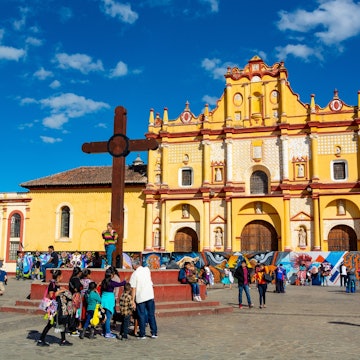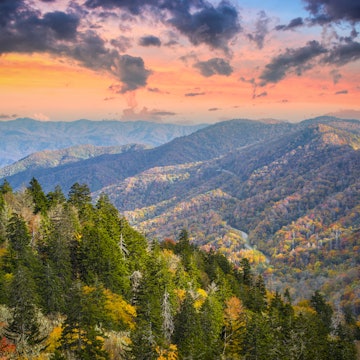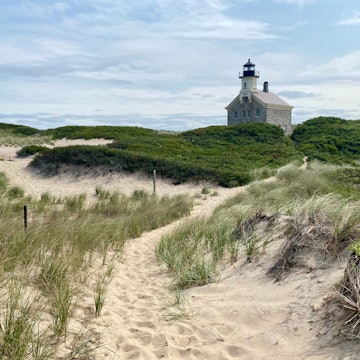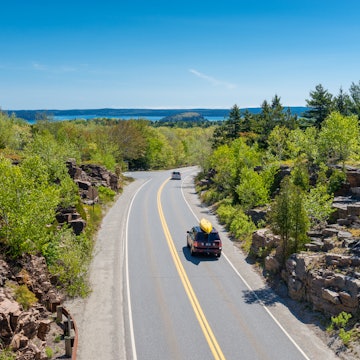
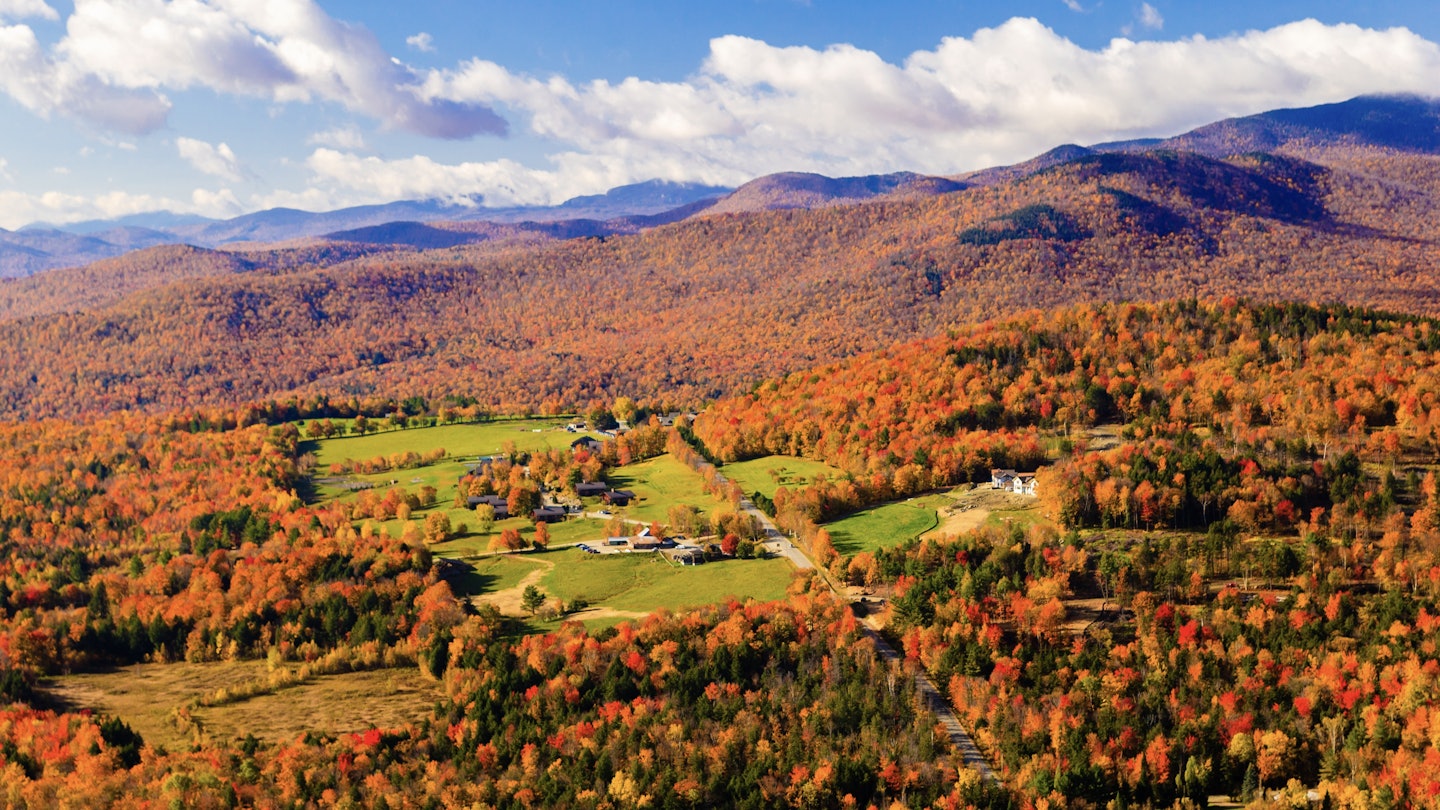
Plan on taking long road trips to soak in the natural beauty of Vermont’s landscapes and the charms of its small towns. Shutterstock
“Vermont is a country unto itself,” wrote the novelist Pearl S Buck.
She was onto something.
This charming New England state has lakes and rivers, mountains and valleys, old mills and covered bridges. Each town has its age-old church and gazebo on the central green. The scenery is studded with forests and farms, reminding you again and again that Vermont is the USA’s most rural state, with a population of only 647,000. Drive the right back road, and you might see more grazing Holsteins than people.
Yet, though Vermonters are few in number, they’re large in spirit. These folks are passionate about community, the great outdoors and keeping traditions alive. Their culture is a wild mix of stoic farmers and rebel hippies, granola college students and off-beat businesspeople. This is a state of proud eccentrics; any local dentist or cashier might also know how to spin wool or fire-dance. (Or run for president – and get millions of votes – as a self-described democratic socialist.) Vermont really is a world apart – a dynamic playground for trekking, shopping and organic living.
Here are 10 of our favorite things to do in Vermont. Depending on your threshold for cold or mud, you can enjoy just about any of these year-round.
1. Explore the Green Mountains
Most people assume that “Vermont” gets its name from the French vert mont – and indeed, the Green Mountains make up the geologic backbone of the state. Their centerpiece is the Long Trail, a 272-mile (438km) hiking route that bisects Vermont and partially overlaps the Appalachian Trail. The oldest such footpath in the US, the Long Trail boasts 70 primitive tent sites. As long as you follow some simple rules, you can also camp almost anywhere in the Green Mountain National Forest – whose 400,000 acres are nearly entirely public land and free to enter.
Planning tip: The Green Mountains are a four-season experience. Just remember to bring hi-viz clothing during the fall hunting season.

2. Carve up the slopes
Downhill skiing is key to Vermont’s identity, and destinations like Stowe and Killington are household names among serious skiers and snowboarders. Winter travelers can pick from 25 public ski areas in the state, along with three private resorts. Ski towns come alive in winter with pubs, cozy restaurants and specialty shops, with most areas having plenty of places to rent all the necessary equipment. Cross-country skiing is also a popular pastime here, along with snowshoeing in the backcountry.
Planning tip: Resort rental shops can get hectic in mid-winter, with crowds of skiers trying on gear on rough benches. Consider renting from a separate outfitter and driving your gear to the ski area.

3. Unspool 400 years of history
In 1609, French explorer Samuel de Champlain entered the mountainous woodscape that would become Vermont; he encountered Indigenous peoples who had inhabited the region for more than 12 millennia. Vermonters take great pride in their history and know it inside and out, from the Green Mountain Boys of the American Revolution to President Calvin Coolidge to the Great Flood of 1927.
The most vivid crash course in Vermont life is the Shelburne Museum, a 45-acre estate with multiple historic buildings, a picturesque round barn and the Ticonderoga, a fully preserved steamboat in permanent dry-dock. Visitors can explore rooms full of antique art, quilts, tools and horse-drawn carriages.
Nearly every town has its local museum and historic sites; a few standouts include the Morgan Horse Farm in Weybridge, the Lake Champlain Maritime Museum in Vergennes and the still-operating Billings Farm and Museum in Woodstock.

4. Go heavy on the maple syrup
Maple syrup is the divine nectar of Vermont, and no visitor should leave the state without a jug or two. You can pick up locally made syrup just about anywhere in the state – yet to really appreciate the craft, consider booking a sugarhouse tour. These sweet-smelling shacks are equipped with steaming vats, in which watery tree sap gets boiled into sugary goodness. Many operations are open to visitors, such as Palmer’s Sugarhouse in Shelburne. Maple candy always makes a great gift, and if you come in winter, you can try “sugar on snow” – heated syrup poured over shaved ice.
Planning tip: Maple products are available year-round, with sugaring generally taking place between mid-February and late April.
5. Sample the best of Vermont’s entrepreneurs: scoops, teddy bears, cheese and beer
In 1978, best friends Ben Cohen and Jerry Greenfield opened an ice cream parlor in a repurposed gas station in Burlington. No one could have imagined that this little labor of love would become Ben & Jerry’s, the global ice cream phenomenon. You can tour the Ben & Jerry’s Factory in Waterbury, Vermont, sample the creamy goods and even visit the “flavor graveyard” outside.
Ben & Jerry’s is just one of the entrepreneurial success stories to come out of the Green Mountain State. Families will fawn over the Vermont Teddy Bear Factory, where patrons can design their own bears and watch how these high-quality toys are sewn and stuffed. There’s also the Cabot Creamery Store, where the acclaimed brand’s cheese, butter and yogurt are produced.
Locals rarely have a chance to get thirsty around here: the state claims more than 100 breweries and brewpubs – enough to warrant an official “Beer Trail.” You can visit taprooms across Vermont, including well-known companies like Magic Hat in Burlington and Woodchuck Cider in Middlebury.

6. Ride the trails
Cyclists have always loved Vermont’s rolling hills and winding dirt byways. And today, riders have more reasons to visit than ever: the state has 1400 miles of established mountain-bike routes, including single-track cut into ski slopes. Meanwhile, the Vermont XL is a 302-mile (486km) route that crosses the state exclusively on gravel backroads.
If you’re looking for something a little gentler on your thighs, the Burlington Greenway is a paved, multi-use path that skirts the shores of Lake Champlain; from there, cyclists can take the Island Line Trail, a former railroad causeway that extends far into the lake.
Planning tip: Vermont has many cycling shops that rent bicycles. Be sure to reserve your ride as far ahead of time as possible, especially in summer.

7. Stay in a “camp”
Vermonters have a lot of quirks, including the local concept of “camp.” Yes, Vermont is full of tents and RVs – but “camping” also refers to a rustic cottage, preferably near a lake. Many owners rent them out, which can make for a chill, unplugged getaway. Traditional summer homes aside, Vermonters love an eccentric dwelling, and travelers can pick from an astonishing range of yurts, farmhouses and glamping grounds all over the state. Among the most delightful: eight modernist treehouses on Twin Farms.
8. Frequent a festival
Vermonters know how to party. In the warmer months, every shire town (yes, they’re really called that) has its craft fair or food festival, and you can pick from 85 farmers markets on almost any given weekend. Some of the biggest annual events include the Burlington Jazz Festival, whose big-name headliners hail from around the world; the Quechee Hot Air Balloon Festival, which fills the sky with aeronauts in baskets; and the Tunbridge World’s Fair, an eclectic mix of music, horse races and carnival rides that’s been taking place since 1867.

9. Eat and drink your way through Burlington
The largest “city” in Vermont is Burlington, a college town on the edge of Lake Champlain with a rich food scene and alternative vibe. Burlington is home to fabulous farm-to-table destination restaurants like Hen of the Wood and Leunig’s Bistro, as well places that serve up international fare, such as Nepalese restaurant Sherpa Kitchen.
Shopping and nightlife are clustered around Church St, a four-block pedestrian mall with brick pavements and more than 100 storefronts. Tried-and-true hangouts include craft beer-and-classic-arcade The Archives, throbbing dance club Red Square and the speakeasy-like Whiskey Room. Phish fans can make their pilgrimage to Nectar’s, the bar and music venue where the world-famous jam band got its start.
10. Make frequent stops
The roads that wind through Vermont’s countryside beg for a scenic drive – and on a nice day, you’ll find plenty of reasons to pull over. Honor-system farm stands are scattered across the state, and hand-painted signs advertise everything from fresh eggs to apple bushels. Antiquing is a popular pastime in these parts, and you won’t have to drive a secondary road for long before finding a quaint general store.
Many livestock farms are open to visitors, allowing you to commune with a range of animals. Want to see alpacas up close? Book a farm stay at Champlain Valley Alpacas. Want to try hand-milking a cow? Stay at the Liberty Hill Farm & Inn. Our advice: budget a full sunny day to drive around and see what you stumble into.
Planning tip: Open Farm Week usually takes place in August, when area farms invite the public to see their operations up close.









